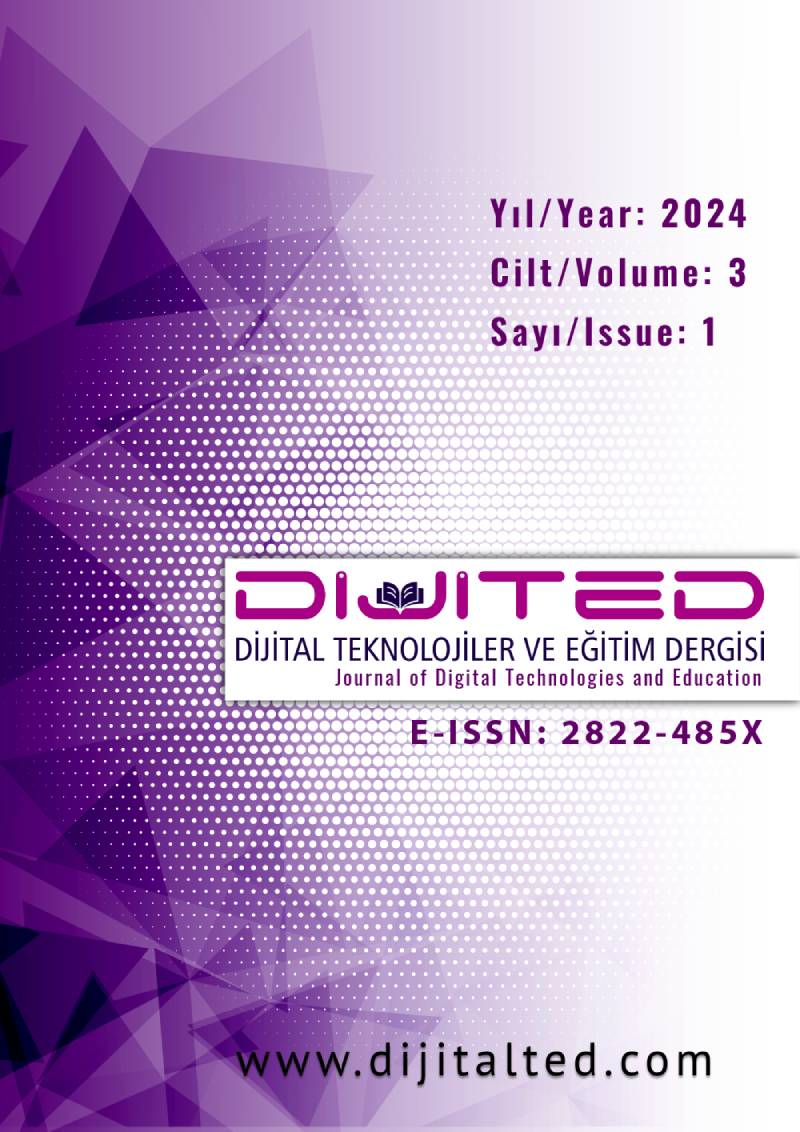Web 2.0 Solutions to Math Learning Disabilities in Primary School: Action Research
DOI:
https://doi.org/10.5281/zenodo.12637365Keywords:
Primary school students, mathematics learning disabilities, Web 2.0 toolsAbstract
This study aimed to improve the addition and subtraction skills of a second-grade primary school student with mathematics difficulties with Web 2.0 tools. The study, in which action research, one of the qualitative research designs, was conducted in the autumn semester of 2023-2024. The student's mathematics learning disability was determined by the achievement test, observations and interviews conducted in the classroom. In the 12-hour study program, five objectives were studied with Web 2.0 tools for the sub-learning area of "Numbers and Operations" in the mathematics course. The number of operations performed in the pre-assessment study is less than in the post-assessment survey. As a result of the activities carried out with Web 2.0 tools, the student developed a positive attitude towards the mathematics course and started to do addition and subtraction operations willingly and carefully, which he could not do independently before. The goal of performing operations at the grade level targeted in the action plan was achieved.
References
Abualrub, M. (2020). The effectiveness of the response to intervention (RTI) model for developing basic math operations among math learning disability students. An-Najah University Journal for Research - B (Humanities), 34(9), 1741-1766. https://doi.org/10.35552/0247-034-009-009
Benavides-Varela, S., Zandonella Callegher, C., Fagiolini, B., Leo, I., Altoè, G., & Lucangeli, D. (2020). Effectiveness of digital-based interventions for children with mathematical learning difficulties: A meta-analysis. Computers & Education, 157, 103953. https://doi.org/10.1016/j.compedu.2020.103953
Brickenkamp, R. & Zillmer, E. (1998). The D2 test of attention. Seattle: Hogrefe & Huber Publishers.
Çelebi, C., & Satırlı, H. (2021). Web 2.0 araçlarının ilkokul seviyesinde kullanım alanları. Instructional Technology and Lifelong Learning, 2(1), 75-110. https://doi.org/10.52911/itall.938122
Doruk, B. K. ve Umay, A. (2011). Matematiği günlük yaşama transfer etmede matematik modellemenin etkisi. Hacettepe Üniversitesi Eğitim Fakültesi Dergisi, 41, 124-135.
Fleishner, J. (2004). Diagnosing and assessing mathematics learning disabilities. In G. Layon(Ed). Frames of reference for the assessment of children with learning disabilities. Baltimore: Paul H Books.
Geary, D. C. (2004). Mathematics and learning disabilities. Journal of Learning Disabilities, 37(1), 4–15.
Gürbüz, R., & Şahin, S. (2015). 8. sınıf öğrencilerinin çoklu temsiller arasındaki geçiş becerileri. Kastamonu Eğitim Dergisi, 23(4), 1869-1888.
Gürgür, H. (2017). Eylem araştırması. (Editörler: Ahmet Saban ve Ali Ersoy). Eğitimde Nitel Araştırma Desenleri (2. baskı). Ankara: Anı Yayıncılık, 31- 80.
Kaçar, H. (2018). İlkokul öğrencilerinin matematik öğrenme Güçlüğünün Sınıf Öğretmenlerinin Gözlem ve Deneyimlerine Göre İncelenmesi. (Yayımlanmamış Yüksek Lisans Tezi). Necmettin Erbakan Üniversitesi Eğitim Bilimleri Enstitüsü, Konya.
Karaoğlan Yılmaz, F. G., Gökkurt Özdemir, B., & Yaşar, Z. (2017). İlkokul öğrencilerinin kesirlerle ilgili hata ve kavram yanılgılarının giderilmesinde dijital hikâyelerle tasarlanan etkinliklerin uygulanması: bir eylem araştırması.
Kıraç, S. (2009). Özel eğitim danışmanlığı yoluyla düşük akademik performanslı öğrencilerin yapabildiklerini dikkate alarak yapılan öğretim düzenlemesinin amaçları gerçekleştirmesindeki etkililiği. Yüksek lisans tezi, Gazi Üniversitesi, Ankara.
Koç, B. (2018). Diskalkulik öğrencilere toplama ve çıkarma öğretimine yönelik bir eylem araştırması (Doktora Tezi, Necmettin Erbakan Universitesi).
Korucu, A. T., & Yücel, C. (2016). Web 2.0 teknolojilerini kullanma sıklığının ders başarısı üzerindeki etkisine yönelik öğretmen görüşleri. Eğitim ve Öğretim Araştırmaları Dergisi, 5(2), 379-394.
Köklü, N. (2001). Eğitim eylem araştırması-öğretmen araştırması. Ankara University Journal of Faculty of Educational Sciences (JFES), 34(1), 35–43.
Larkin, K., & Jorgensen, R. (2016). ‘I hate maths: why do we need to do maths?’Using iPad video diaries to investigate attitudes and emotions towards mathematics in year 3 and year 6 students. International Journal of Science and Mathematics Education, 14, 925-944.
Math and Dyscalculia Services (2024). What is Dyscalculia? 07.01.2024 tarinde https://dyscalculiaservices.com adresinden erişilmiştir.
Morrison, J. (2016). DSM-5’i kolaylaştıran ‘Klinisyenler için tanı rehberi’. Muzaffer Şahin (Çev Ed.). Ankara: Nobel.
Olkun, S. (2014). Matematik öğrenme güçlükleri/diskalkuli. (ss. 211-226). (Editör: S. Sunay Yıldırım Doğru). Öğrenme güçlükleri (2. baskı). Ankara: Eğiten Kitap.
Özpınar, İ. (2023). Effects of using web 2.0 tools in mathematics ınstruction on academic achievement and attitude and examination of relevant teacher-student views. Kastamonu Education Journal / Kastamonu Eğitim Dergisi, 31(4), 639–650. https://doi.org/10.24106/KEFDERGI-2022-00
Patton, M. Q. (2014). Qualitative research & evaluation methods: Integrating theory and practice. Sage publications.
Swann, C. (2002). Action research and the practice of design. Design Issues, 18(1), 49–61.
Şencan, H. (2005). Güvenilirlik ve geçerlilik. Hüner Şencan.
Wang M.-T., Fredricks J. A., Ye F., Hofkens T. L., Linn J. S. (2016). The math and science engagement scales: Scale development, validation, and psychometric properties. Learning and Instruction, 43, 16–26.
Yıldırım, A., & Şimşek, H. (2013). Sosyal bilimlerde nitel araştırma yöntemleri. (9. Genişletilmiş Baskı) Ankara: Seçkin Yayınevi.
Yuen, S. C. Y., Yaoyuneyong, G., & Yuen, P. K. (2011). Perceptions, interest, and use: Teachers and web 2.0 tools in education. International Journal of Technology in Teaching & Learning, 7(2), 109-123.
Downloads
Published
How to Cite
Issue
Section
License
Copyright (c) 2024 Journal of Digital Technologies and Education

This work is licensed under a Creative Commons Attribution 4.0 International License.
- Abstract 884
- PDF 284









